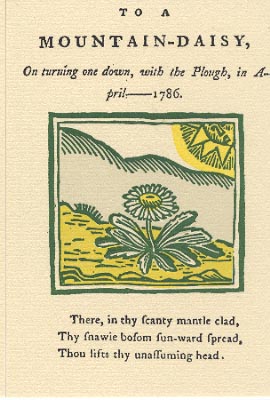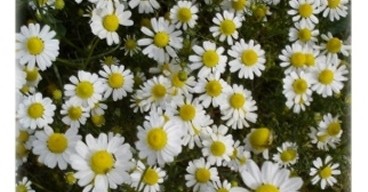“To a Mountain Daisy” is written by Robert Burns, one of the best eighteenth-century Scottish poets who gave his all poems to the readers. We can see various types of images in his poems. sometimes he speaks on love, sometimes on his country Scotland, even on his sorrows, and on nature.
“To a Mountain Daisy” is one of the best poems of Burns and the title refers that it is dedicated to a Scottish mountain called ‘Daisy’. This poem was written about a year, 1786.
This is probably the year where the poem is being written. according to the critics, this is a romantic poem along with imagery.
Summary
The poem consists of a total of nine stanzas. The first line begins with a description of flowers. Small, smelly, and crimson-tripped flowers are hung and when the poet met the flowers it was an evil hour for the poet.
Now the poet is grabbing a flower by its slender stem and looking at this. The poet wants to spare its tiny body because in his past it was power.
“Alas! it’s no thy neibor sweet,
The bonie lark, companion meet,
Bending thee ‘mang the dewy weet
Wi’ spreck’d breast,”
Here, in the next stanza, he utters that this was not the neighbour of the flower. These flowers are sweet and meek that are bending with speckled breasts. This line means that there are many scares in the stick of the flower.
When the spring comes towards the flowers they rise at the purpling east. Flowers could blow with the air of the north which is like biting their boughs when the new flowers are arriving.
Then the poet explains that these are cheerful to him because their scars are being melted with father earth.
“The flaunting flowers our gardens yield
High shelt’ring woods an’ wa’s maun shield:
But thou, beneath the random bield”
In the third stanza, the poet utters that they are sheltering the lower part of the trees. Even the garden looks highly attractive because of its beauty.
There the stanza ends and in the next stanza, he speaks about the small dress that it wears and its snowy bosom seems to spread like the sun’s rays.

Now Burns is describing that it lifts from the ground like an unassuming head and at the end, it is on that ground from where he rises.
“Such is the fate of artless maid,
Sweet flow’ret of the rural shade!
By love’s simplicity, betray’d
And guileless trust;
Till she, like thee, all soil’d, is laid
Low i’ the dust.”
This stanza is very beautifully written. Robert Burns enunciates dedicated to god that fate made this art of many shades and colours.
There is a guiltless trust that never is betrayed. This flower is being used for love that once the poet also gifted his beloved. Then she removes the mud from the flower but at last, it laid on the dust because the love is broken.
The art of the flower is easy and simple that seems like life’s ocean suddenly started blowing. The poem can get to know about these because he gained experience.
“Ev’n thou who mourn’st the Daisy’s fate,
That fate is thine—no distant date;
Stern Ruin’s ploughshare drives elate,
Full on thy bloom,
Till crush’d beneath the furrow’s weight
Shall be thy doom.”
The fate is suffering from pain and the flower is mourning in the breast of the ‘mountain daisy’. Who mourns on mountain daisy, the fate becomes their own and the flowers have grown on its body that will be crushed with time and this will be the fate.
Love is always a representation of love and here Burns justifies the fact of fate. Those who reject the flower of love become a part of its fate. This is how the poem ends here.
Analysis of To a Mountain Daisy
This poem is definitely romantic fills with imagery and symbolism. The title of the poem is addressing the mountain but the main thing centres on the flower. The description of the flower is given with the finest touches of Robert Burns.
This is not the end the poet also makes references to his personal life. Once the poet gifted it to her beloved and she rejected it. The poem ends with the sorrow of the poet.
Theme of To a Mountain Daisy
In the case of this poem, Robert Burns has written on the flowers grow on the earth. So, romanticism and love both come first as the themes.

Then comes sorrow as a theme because the poet himself is being refused after gifting the flower to his lady love. Based on these themes the poem is situated.
Literary Devices
Literary devices or figures of speech are the pillars of A poem. It is not for the eyes but the listening. The rhetorical device includes rhymes, rhythm, words, symbols, etc. Here Robert Burns writes follows a rhyming pattern “aaabab”.
Except that, we have a common device Syncope. Syncope is a writing style where a word used to be written using an apostrophe just like,
“flow’r”, “pow’r”, “shelt’ring”, etc.
Symbolism is another device. Here, the poet uses symbols to give an expression of love and beauty.
Imagery is also a relevant device that is being used to pull up an image in front of all the readers like,
“Wee, modest, crimson-tippèd flow’r,”
This is imagery because here the readers can clearly see an image.
These are all relevant literary devices. Though there still have some devices but not very significant.